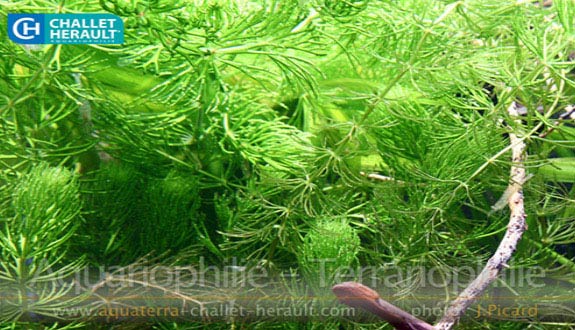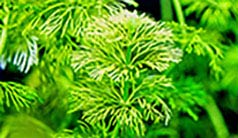

Alternative species (click on the thumbnail to see the card)
Names
Scientific name
Ceratophyllum:
Demersum
Aspera
Cornutum
Cristatum
Gibbum
Muricatum
Polyacanthum
Triacanthum
Tricorne
Verticillatum
Common name
Coontail
Hornwort
Rigid Hornwort
Common Hornwort
Hornwort coon's tai
Origin

Origin: Cosmopolitan
Ideal fertilization

CO2: 5-40mg/l
Nitrates (NO3): 10-50mg/l
Phosphates (PO4): 0,1-3mg/l
Potassium (K): 5-30mg/l
Iron (Fe): 0,01-0,5mg/l
Group
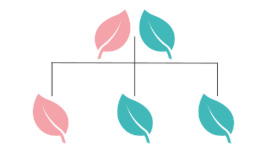
Ceratophyllaceae
Kind

Stem
Floating plant
Parameters

T°: 10 to 26°C or 50 to 79°F
pH: 6 to 9
hardness: 1 to 18°dGH
Difficulty

Easy
Lighting

Average
Size

50 to 100 cm (20 to 39")
Plantation
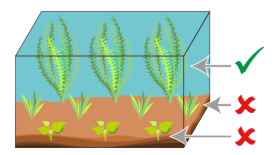
Background
Growth

Fast
Presentation
Who is the Coontail?
Presentation
Who is the Coontail?
Thanks to its bushy appearance, it nicely dresses the back or the surface of your tray. It will particularly please as a floating plant, the base not buried in the ground (it feeds by its leaves). Its growth is then very fast.
The immersed Coontail is a good ally for the quality of the water because it lowers the level of nitrates. This plant is also very effective in the fight against algae because it feeds on the same nutrients. In addition, it produces harmful substances that slow down the development of algae. By extension, it is in competition for food with all the other plants of the tray. If you notice deficiencies, use fertilizer.
It is ideal as a refuge for fry: it offers hiding places and a stock of micro-organisms that develop there. In addition, it does not require a substrate. As a result, it is widely used in breeding aquariums.
Be careful, it is quite fragile and breaks easily.
Finally, note that this plant prefers to be in an outdoor pond.
Planting and maintenance
How to plant and maintain the Coontail?
Planting and maintenance
How to plant and maintain the Coontail?
Place it preferably at the back of your aquarium because it grows very fast and becomes invasive.
It will also be necessary to cut it often to avoid that it gives shade to the other plants. You can just let it float (watch out for the heat from the lighting), attach it to a support with a fishing line or plant it in the ground.
It prefers slow streams and stagnant waters. Therefore, avoid placing it near the filter discharge.
Farming
How to farm the Coontail?
Farming
How to farm the Coontail?
By cuttings. Cut off the side rejects that reach about 20 centimeters or 8 inches. Stems that are too big should be overhead. Do this regularly to give light to other plants.
Good To know
Find all additional information!
Good To know
Find all additional information!
Its colour varies according to the brightness and the temperature.
It is sensitive to algae and if it is invaded, it will be very difficult to get rid of it.
You will easily notice a difference between C.demersum and C.submersum in the following diagram:
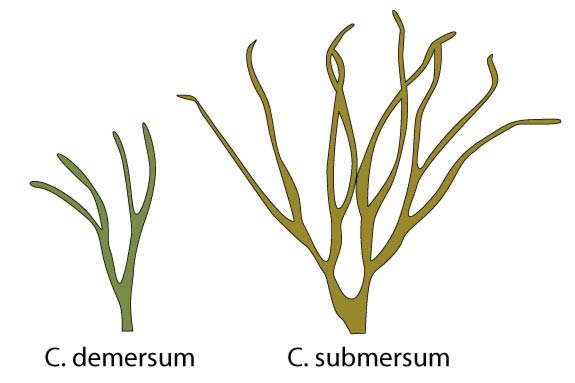
Yours photos!
Comments
Sort by:
Please login to post comments
